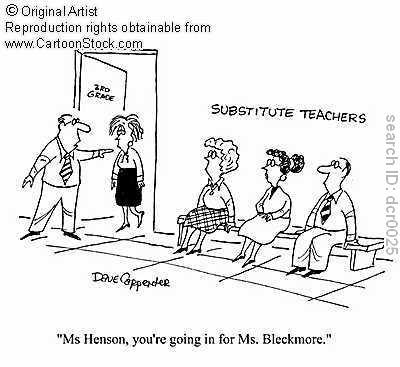 1. TITLE OF LESSON
1. TITLE OF LESSON
Unit 3; Lesson 6—Photosynthesis &
Cell Respiration
2. CURRICULUM AREA & GRADE LEVEL
9th grade Biology
Dr. Rachel Richards
3. STUDENT INFORMATION
A. English Language Learners
All ELL students are CELDT level 4.
There are 4 in period 5 and 6 in period 6 for a total of 10 ELL students. See
Unit 3; Lesson 1: Introduction to the Cell for more detail.
B. Students with Special Education Needs
There are 4 students with IEPs or 504s
in period 4 and 4 in period 6 for a total of 8. Learning disabilities include
ADHD (2), anxiety (1), autism (2), specific learning disability (e.g. reading
comprehension/memory retention) (2), and mild cerebral palsy (1). See Unit 3;
Lesson 1: Introduction to the Cell for more detail.
4. RATIONALE
A. Enduring Understanding
Plants get their energy by converting
sunlight into sugar through a process called photosynthesis. All living
organisms break down glucose (from food or sunlight) into ATP for energy in a
process called cellular respiration. Photosynthesis requires CO2 and sunlight
to begin, while cell respiration requires oxygen and glucose. CO2 is a
by-product of cell respiration, and oxygen is a by-product of photosynthesis so
the two processes are interdependent. All of the oxygen in the Earth’s
atmosphere that we breathe in order to carry out cell respiration comes from
photosynthesis. If there were no plants (and phytoplankton) or sunlight, we
would not be able to breathe the air around us. In addition, although there are
key differences between cell respiration and breathing, the two processes are
closely connected. In fact, breathing brings oxygen to the body, which is one
of the necessary reactants to start the cell respiration process in our cells.
B. Essential Questions
Compare and contrast photosynthesis
and cell respiration.
C. Reason For Instructional Strategies &
Student Activities
My classes are composed with freshmen.
Most of them don’t like biology, as evidenced by an informal poll on the first
day of class. Therefore, my classes are very hands-on and activities-based. In
addition, I design my intros, presentations, and activities to be fun,
engaging, and thought-provoking. The use of multiple resources and teaching
styles will help my diverse class understand the key points of this unit,
regardless of whether they learn through visual, auditory, and/or kinesthetic
modalities. These various strategies will also help the ELL students and
students with special needs in my class learn the new material by being exposed
to it in different ways.
5. CONTENT STANDARD(S)
1. Cell Biology: The fundamental life
processes of plants and animals depend on a variety of chemical reactions that
occur in specialized areas of the organism’s cells.
1. Cell Biology: The fundamental life
processes of plants and animals depend on a variety of chemical reactions that
occur in specialized areas of the organism’s cells.
f.
Students know usable energy is captured from sunlight by chloroplasts and is
stored through the synthesis of sugar from carbon dioxide.
g.
Students know the role of the mitochondria in making stored chemical-bond
energy available to cells by completing the breakdown of glucose to carbon
dioxide.
i.
Students know how chemiosmotic gradients in the mitochondria and chloroplasts
store energy for ATP production.
6. ELD STANDARD(S)
Listening & Speaking (Cluster 9;
EA): Prepare and deliver brief oral presentations on a problem and solution, or
cause and effect.
7. LEARNING GOAL(S) – OBJECTIVES (all
cognitive; some psychomotor (lab))
After
being presented with content on cell respiration and photosynthesis, students
will be able to construct and present a poster comparing and contrasting the
two processes.
8. ASSESSMENT(S)
A. Diagnostic/Entry Level:
3 students will be called on randomly
to share their summaries from their notes on ATP (previous lesson). In
addition, before launching into new content about cell respiration and
photosynthesis, I will ask them to share their definitions of related vocab words
(which should be completed). For cell respiration, these vocab words include:
cellular respiration, glycolysis, electron transport chain, and Krebs cycle. For
photosynthesis, the vocab words include: photosynthesis, light dependent
reactions, chlorophyll, stroma, thylakoid, and Calvin cycle.
B. Formative – Progress Monitoring:
Students will asked to share their
answers every 2-3 slides when presented with content on cell respiration and
photosynthesis. I will circulate as students create their posters to informally
check for understanding.
C. Summative:
Students will construct and present a
poster comparing and contrasting cell respiration and photosynthesis. Students
will take a quiz on this material and a unit exam at the end of the following
week (both are multiple-choice).
9. EXPLANATION OF DIFFERENTIATION FOR ELL
& STS W/ SP ED NEEDS
A. English Language Learners
1.) Content: Students are arranged into heterogenous groups
of 4 according to current grade so those who need help with note-taking can
look at the notes of a partner next to them. I pause to ask for questions to
ensure everyone is ready before I advance a slide.
2.) Process: Students are arranged into heterogenous groups
of 4 according to current grade so those who need help have others who can
provide peer-tutoring (worksheets, labs, poster activity). I circulate as they
look through the microscope to provide assistance. Finally, I check for
understanding frequently through random Q&A. Students have frequent
opportunities to hear other student explanations, as well as being randomly
assessed.
3.) Product: Following oral instruction of the poster, students
are given a handout with guidelines and written instructions (attached). Students
can rely on others and see me for assistance in demonstrating and explaining
osmosis after observing swelling in hypotonic solution and shrinking in
hypertonic solution. I circulate to assist them while they write their answers
on the lab worksheet (attached).
A. Students with Special Education Needs
1.) Content: Students with IEPs or 504s are accommodated, as directed. Some
students are placed in different seats for better visual access to the
whiteboard. Students are arranged into heterogenous groups of 4 according to
current grade so those who need help with note-taking can look at the notes of
a partner next to them. I pause to ask for questions to ensure everyone is
ready before I advance a slide.
2.) Process: Students are arranged into heterogenous groups of 4 according to
current grade so those who need help have others who can provide peer-tutoring
(worksheets, labs, poster activity). I circulate as they create their posters to
provide individual assistance, if needed. Finally, I check for understanding
frequently through random Q&A. Students have frequent opportunities to hear
other student explanations, as well as being randomly assessed.
3.) Product: Following the oral instructions of how to make
their posters, students are given a handout with guidelines and written instructions
(attached). Students can rely on others and see me for to aid in comparing and
contrasting photosynthesis and cellular respiration. I circulate to assist them
while they write their answers on the lab worksheet (attached).
10. INSTRUCTIONAL STRATEGIES
A. Intro (10 min):
Students summarize their notes on ATP from
the previous lesson. The, I will call on students to share their definitions
for words related to cell respiration and photosynthesis (which should already
be completed). For cell respiration, these vocab words include: cellular
respiration, glycolysis, electron transport chain, and Krebs cycle. For
photosynthesis, the vocab words include: photosynthesis, light dependent
reactions, chlorophyll, stroma, thylakoid, and Calvin cycle.
*Note—I would do a demonstration
(discrepant event) with two clear containers, both with a lit candle
underneath. One of the containers would have a small plant inside as well.
Students would be guided to respond to inquiry-based questions in order to
think about what the fire is consuming (oxygen) and why the candle in the
container with the plant stays lit longer.
B. Instruction (35 min each; 2 days): I will instruct them to open up a fresh page
in their spiral notebooks for note-taking. I will then present content on photosynthesis
and cell respiration, over the period of 2 days, periodically stopping to ask
questions and check for understanding (ppt attached). For photosynthesis, these
questions include:
n
Which organelle does photosynthesis?
n
What are three parts of a chloroplast?
n
What are the reactants in
photosynthesis?
n
What are the products?
n
What part of the chloroplast does the
light dependent reactions?
n
What part does the Calvin Cycle?
n
What temperatures might slow down
photosynthesis?
n
If a plant has an unlimited amount of
reactants, will photosynthesis speed up forever?
n
What can stop photosynthesis?
For cell respiration, these questions
include:
 What is the equation for cellular respiration?
What is the equation for cellular respiration?
 How is it similar to photosynthesis?
How is it similar to photosynthesis?
 What is the first stage of cellular
respiration?
What is the first stage of cellular
respiration?
 What does the cell check for to see if it
should continue cellular respiration?
What does the cell check for to see if it
should continue cellular respiration?
 What is the second stage of cellular respiration?
What is the second stage of cellular respiration?
 What is the third stage of cellular
respiration?
What is the third stage of cellular
respiration?
 How much ATP is made by cellular respiration?
How much ATP is made by cellular respiration?
C. Guided Practice (Block Day—90 min): After distributing the poster handout, I will
go over it with the class. Students will be instructed to break into their lab
groups. Then, I will circulate and answer questions as students prepare their posters.
D. Independent Practice (30 min): Students will be instructed to present their
posters in groups (3 minutes each).
11. STUDENT ACTIVITIES
Students will summarize their notes on
ATP from the previous lesson and share responses with the class. Then, they
will share definitions for related vocabulary words. For cell respiration,
these vocab words include: cellular respiration, glycolysis, electron transport
chain, and Krebs cycle. For photosynthesis, the vocab words include:
photosynthesis, light dependent reactions, chlorophyll, stroma, thylakoid, and
Calvin cycle.
B. Instruction (35 min each; 2 days): Students will take Cornell-style notes on the
content presented. Periodically, students will respond to questions embedded in
the Powerpoint presentation.
C. Guided Practice (Block Day—90 min): Students will create their posters in groups
and prepare for their presentations.
D. Independent Practice (30 min): Students will present their posters to the
class (3 minutes each).
12. RESOURCES
PowerPoint
presentations “Photosyntheis” & “Cell Respiration” (2)
Poster
handout
Link
to my blog for more resources on Cells (Unit 3).
Link
to resources in Google Docs:
 By attending SST Meetings at both
San Marcos Elementary School and Mission Hills High School, I learned about the
purpose of a SST Meeting and the roles and responsibilities of SST members. At
the meeting, I took notes, based on my observations. I also created a chart
that identifies the roles and responsibilities of those who attended the SST
Meeting at San Marcos Elementary. In addition, I also created a “Benefits” list
and a list of strategies to use for future SSTs, which lists the advantages of
an SST Meeting.
By attending SST Meetings at both
San Marcos Elementary School and Mission Hills High School, I learned about the
purpose of a SST Meeting and the roles and responsibilities of SST members. At
the meeting, I took notes, based on my observations. I also created a chart
that identifies the roles and responsibilities of those who attended the SST
Meeting at San Marcos Elementary. In addition, I also created a “Benefits” list
and a list of strategies to use for future SSTs, which lists the advantages of
an SST Meeting.




